Pain and the brain
Persistent pain is very different from the kind of pain you experience when you touch something hot or injure yourself. It goes on long after the original cause, and affects different parts of the brain and nervous system.
Sensations can resemble the original injury or damage, so it feels as though the damage has not healed, when it actually has. It’s like a radio switched on permanently and the volume turned up.
So what can you do to change it? Is it possible to turn the volume down?

Persistent pain can cause a range of problems, including:
-
Excitable nerves – slight pressure can cause unpleasant and painful sensations like pins and needles or electric shocks.
-
Sensitivity – skin, muscles or nerves can be more sensitive to pressure, touch or heat.
-
Faulty brain activity – the systems that turn down pain don’t work.
-
Low mood – living with persistent pain can cause strong feelings such as anger and frustration.
So what can you do to reduce persistent pain?
To reduce your pain, you need to help your brain to turn the pain down. This means ‘retraining your brain.’ It can come as a bit of suprise to realise that this can actually be done.
You can retrain the brain by getting fitter and stronger, balancing your activities and focusing more on your valued goals and less on the pain.
Over time as you are living a more healthy life, being more active and doing things normally and focusing on living life, your brain will become less overprotective and your pain more manageable.
The rest of the Footsteps in this online resource will show you more about how to do this.
But first, it may be helpful to find out a bit more about how pain and the brain are connected . . .
Pain and the brain – how it really works
Many of us have a very simple view of how pain works . . .
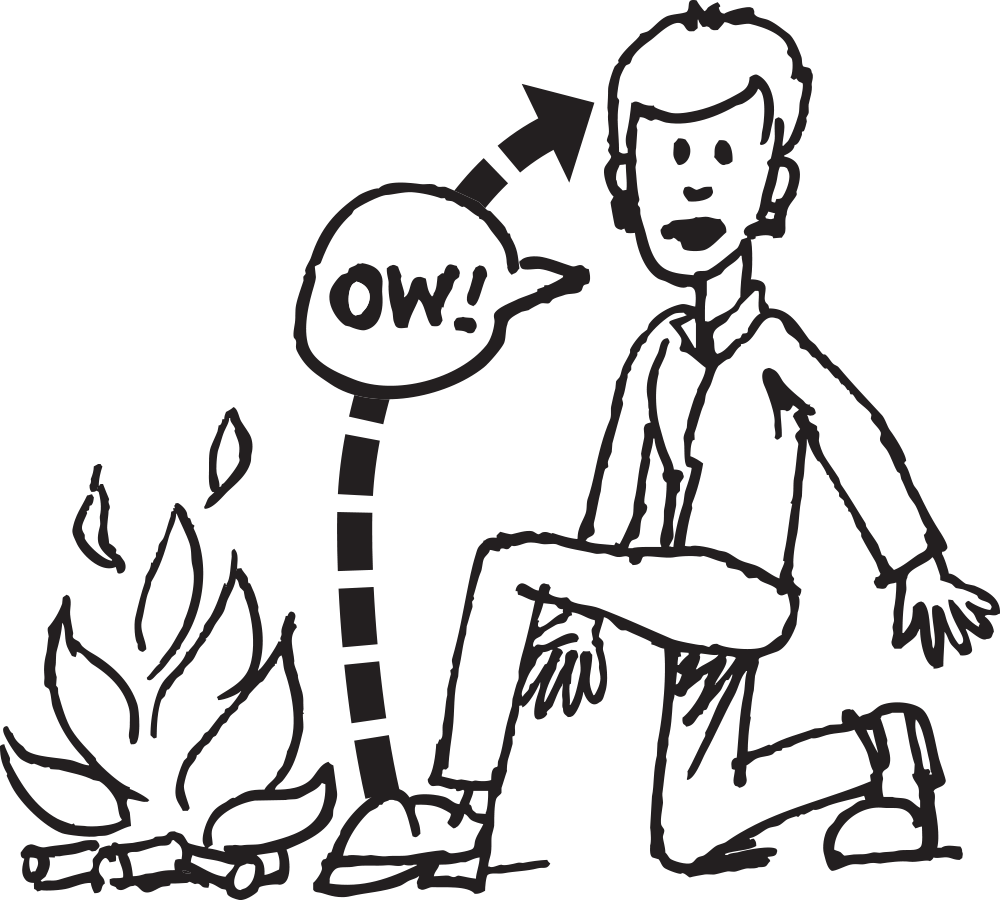
But in reality, pain is a two-way street . . .
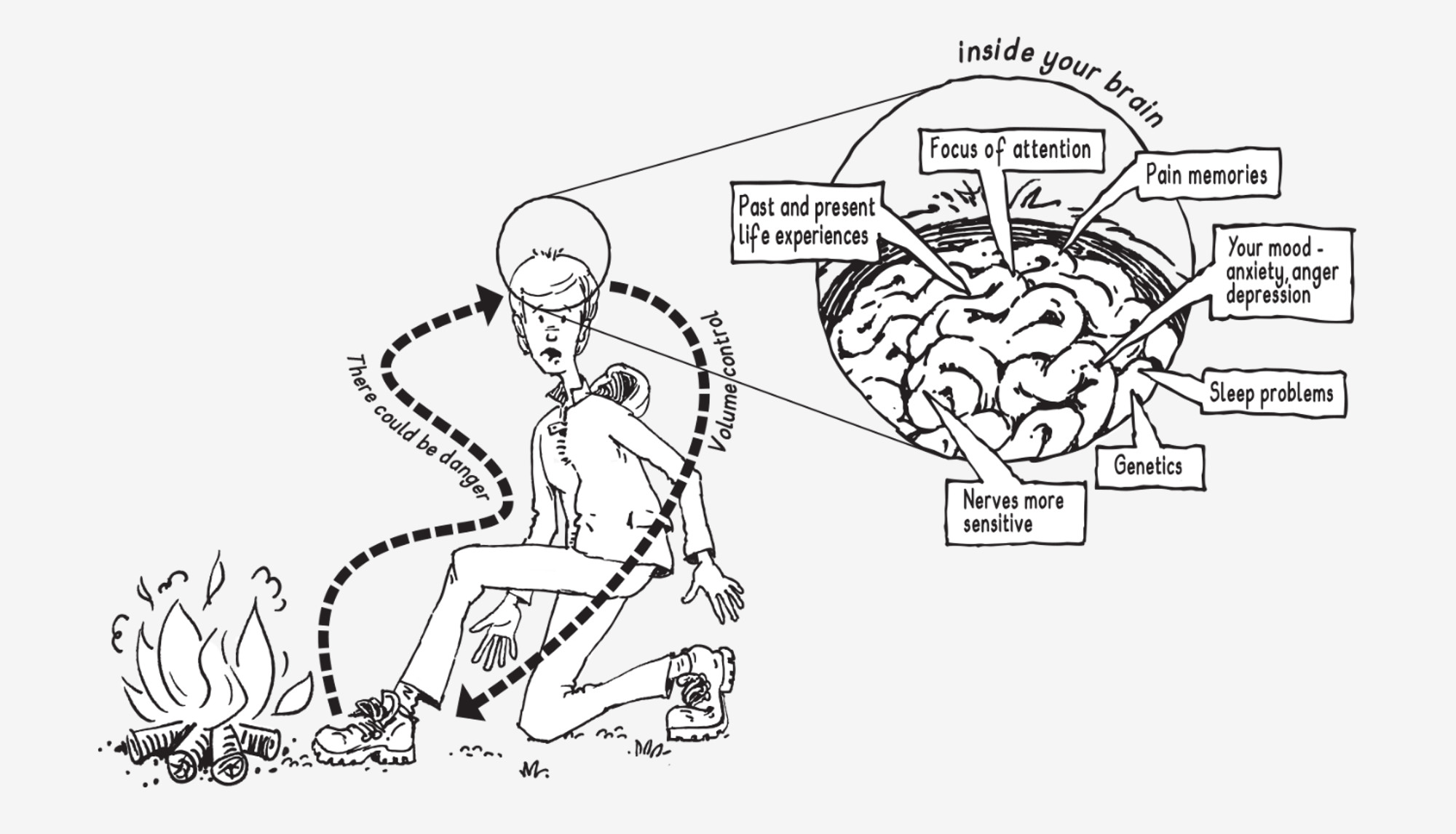
Pain is one of our protective systems. It is designed to keep us safe and well, and it’s controlled by the brain.
Our brain decides when to protect us based on information it receives from:
-
areas of the body, and
-
many other factors it gathers from elsewhere
It assesses the current situation based on both these types of information.
If the brain decides it needs to protect, pain will happen.
In persistent pain, even though the original trigger for the pain may have stopped, the other factors are still there, so the brain becomes over-protective and keeps the pain going. It’s a bit like the brain struggling to turn down the ‘volume control’.
Tame the Beast
One of the best videos around to help you understand persistent pain, Tame the Beast by Professor Lorimer Moseley explains how pain works and introduces new approaches to help reduce your pain.
Watch the video

More videos about pain
Understanding pain in less than five minutes
Here’s a short video that helps explain how pain works, featuring the well known cartoon character ‘Brainman.’
What is pain?
This short video from Live Well with Pain’s Dr Patrick Hill provides a simple explanation of pain, long term or chronic pain and fatigue.
Pain and emotions
Pain is a very isolating and invisible – no one else can see or feel your pain. This adds to the frustration of living with it.
Emotions like anger, anxiety or depression can wind up pain nerve networks making them more sensitive. Try to remember: “this is not your fault.”
Find out more about pain and emotions in Footstep 8 – Managing moods
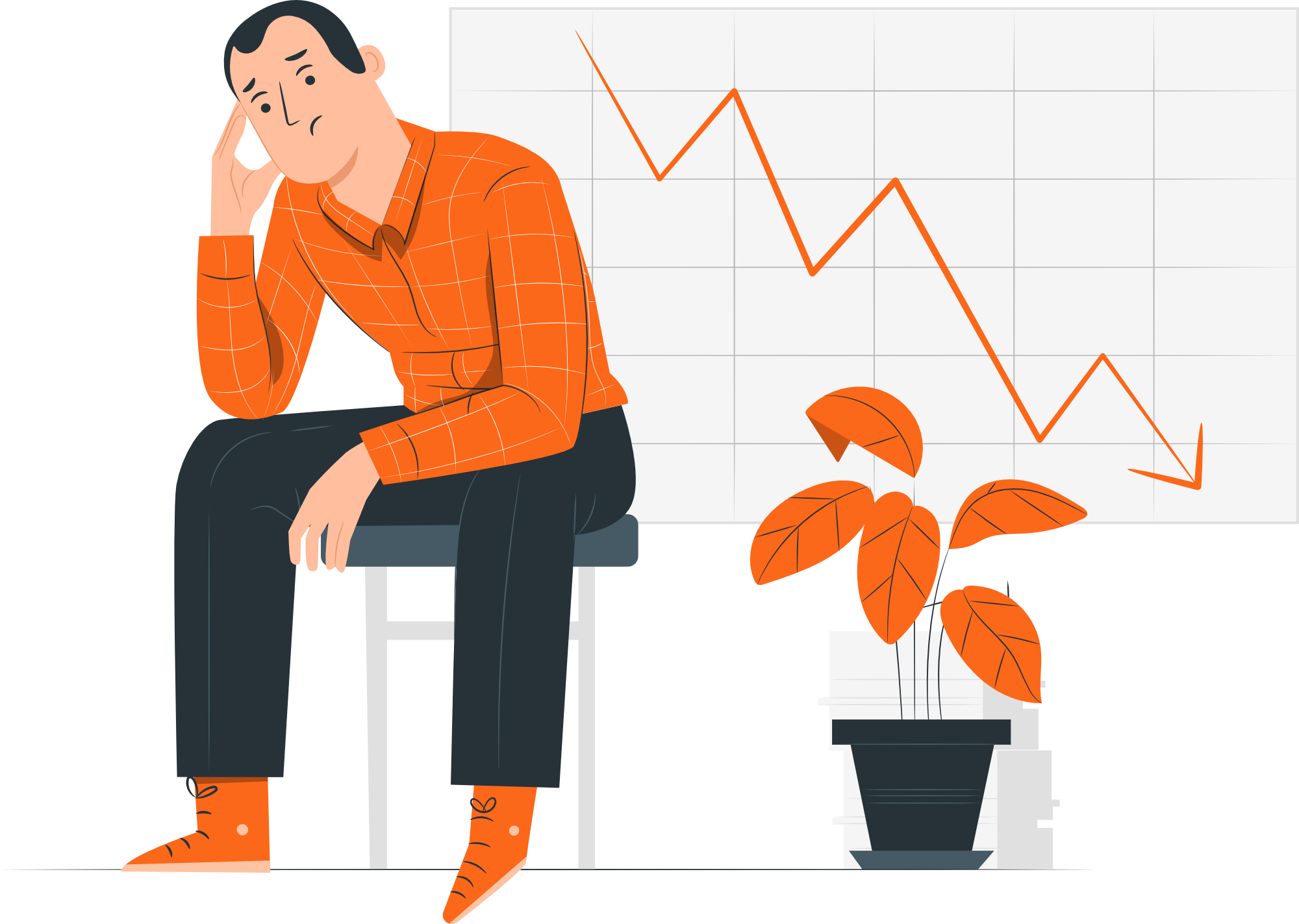
Before you move onto Footstep 2, here are some useful resources to help learn more about how your brain affects the pain
Useful resources
Pain and the Brain
Pain and the Brain – how it really works:
Download the information from Footstep 1, so you can share with friends and family to help them understand as well
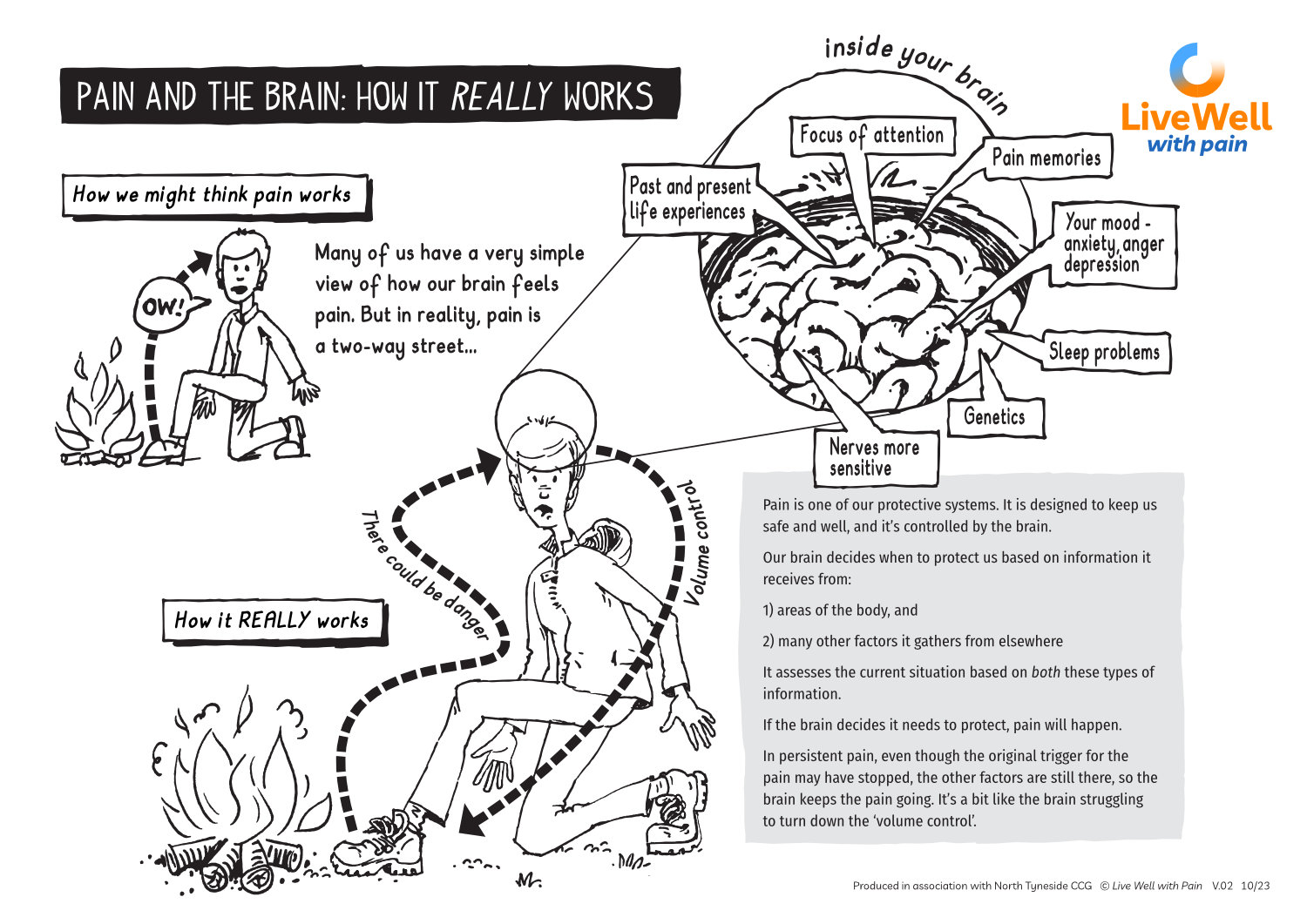
Flippin Pain website

Explaining Pain
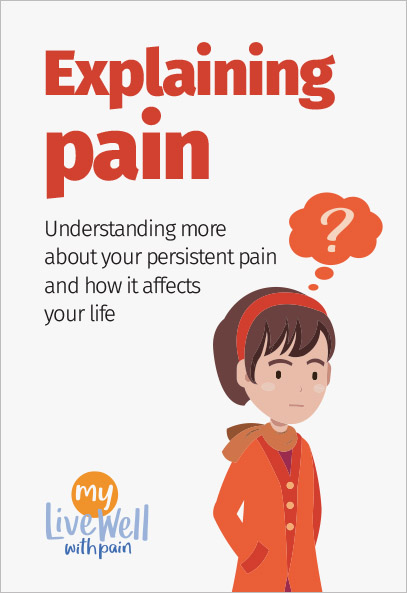
Pain and the brain
Key ideas
✔ Persistent pain is different from the kind of pain you experience when you injure yourself
✔ It goes on long after the original damage has healed – it’s as if the brain can no longer ‘turn down the volume’
✔ Reducing persistent pain involves retraining your brain
✔ Learning self management skills so you can live your life despite the pain are the best way to ‘turn down the pain’